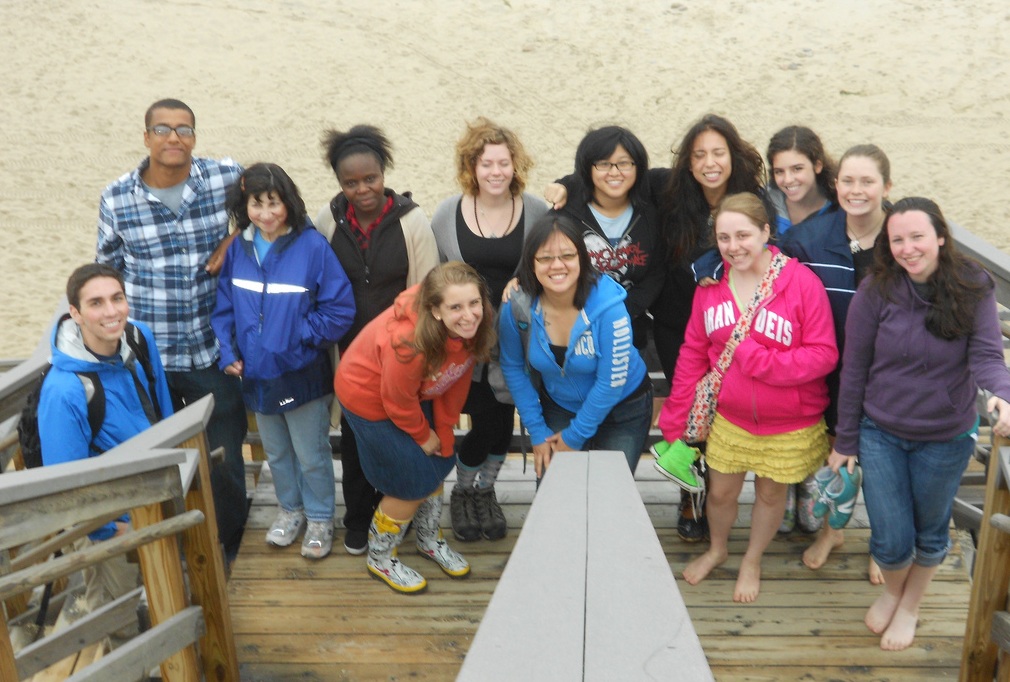Students in Professor Laura Goldin’s Environmental Health and Justice Program have uncovered problems with the air quality in nail salons in Boston and are working to inspire change.
The study showed that the presence of particulate matter, carbon dioxide and total volatile organic compounds in the salons was much higher than accepted guidelines. In excess, these substances are known or highly suspected to cause skin, respiratory and reproductive-health problems.
They also found that, contrary to their initial hypothesis, the higher levels of toxins were consistent throughout the salons, indicating that exposure may not be limited to the manicure table where work is being performed.
The study was conducted last semester in cooperation with the Boston Public Health Commission’s (BPHC) Safe Nail Salon Project and Viet-AID, an economic development and advocacy organization. It measured air quality in 21 nail salons over the course of 10 weeks.
Through this study, Goldin says, students learned to design this kind of scientific study, to designate and carry out the roles of a study team, to use precision equipment, to analyze and portray results, and to publicize their findings and build relationships with communities.
"I’m hopeful it will be an experience of their lifetime, so they can grow from it in whatever fields they want to pursue,” Goldin says of the program, which is a Justice Brandeis Semester. “In learning this way, tackling real-word issues directly, they know they are also building relationships and making significant contributions to the individuals and communities affected."
Goldin, who works with students with a variety of community organizations, said she was already involved with the BPHC and the Safe Nail Salon project when she decided it would be a great study for the class. It’s not only an environmental health issue, she says, but also one of social justice; Vietnamese immigrants comprise 37 percent of licensed nail salon workers in the United States.
Neurological toxicants like xylene, toluene, acetone and methyl ethyl ketone nail polishes and hardeners are used all day by salon employees, most of whom are young female immigrants of reproductive age.
“Safety precautions like those little masks don’t do an thing,” Goldin says. “The workers are unprotected from occupational exposure.”
So students set out to measure the toxic chemical exposure of workers in nail salons, which has become a $6.5 billion-plus industry nationwide.
First students had to solicit salon owners’ consent for conducting the air quality monitoring, which their partner organizations and experts suggested would be an arduous task. The students created fliers in English and Vietnamese, went door-to-door and made countless phone calls. As a result, they were able to get almost twice the predicted number of salons on board.
Goldin’s co-instructors – four environmental health scientists, some of whom are affiliated with Harvard’s School of Public Health – also worked closely with the students.
“I think it’s really cool to conduct this study with salons in Boston and then help the BPHC implement safe alternatives to make nail salons safer,” says Liza Ansher ‘13, a student who worked on the study and is currently interning at the Boston Public Health Commission, along with fellow JBS participant Meda Kisivuli ‘12.
Though the program ended months ago, students found the study so compelling and its potential impact so satisfying that they continue to work on the subject in a variety of ways – using it as material for a senior thesis, further exploring the topic through internships, presenting the findings at relevant conferences and forums or advocating for salon employees on a volunteer basis.
“Most of the students are just doing it now out of personal interest,” Ansher says.
They continue to bring their findings to stakeholders and the public. Students have presented not only their findings, but also suggested remedies – which are being touted by the BPHC – to salon owners, the Safe Nail Salons Project and Viet-AID. Those remedies include opening doors and windows and investing in better ventilation systems.
Soon they’ll also make an appearance on a local Vietnamese cable channel and at a safe cosmetics event. In addition, they have been asked to present the study at the Academy of Sciences International Conference on Environmental Science and Technology, a trip for which they are currently fundraising.
“There’s been a great deal of interest in this study,” Goldin says.

No comments:
Post a Comment